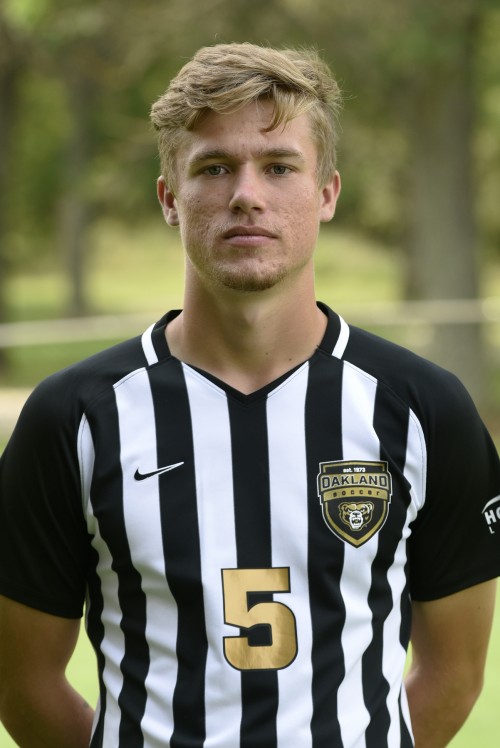
Juvenile diabetes hasn’t slowed men’s and women’s soccer standouts
It is difficult enough to be a successful student-athlete these days. Add a disease such as diabetes and the challenge becomes even greater.
Two college soccer players have managed not only to survive, but have thrived on every front. That’s a big reason why University of North Carolina-Greensboro defender Lauren Lopez and George Mason midfielder Richard Edgar are candidates for the Lowe’s Senior CLASS Award. They don’t feel sorry for themselves one bit. They go out and live life to the fullest, realizing its limitations.
“First and foremost, it is your health,” Edgar said.
Indeed. If it is not taken care, diabetes eventually can cause vision impairment, loss of limbs, and damage to the heart, kidneys and brain. Each player has to deal with the disease in his and her own way.
Lopez was hit with a double whammy. She graduated high school a semester early and was able to enroll at Greensboro for the spring semester, allowing her to play spring ball with the women’s team in March 2006.
However, she tore her ACL, MCL and meniscus during her first spring match.
“I had never been injured before,” she said. “It was all surreal.”
A week later Lopez was diagnosed with diabetes. Lopez didn’t realize at the time, but she was showing at least one symptom—weight loss.
“It was a tough couple of weeks, to say the least,” she said.
Edgar discovered he had diabetes as a 12-year-old in the sixth grade. He was on tour with D.C. United’s Under-12 team in Paris and felt weak.
“I did pushups and sit-ups to try to get stronger,” he said.
It didn’t help. Three weeks prior a family friend was diagnosed with diabetes and Edgar’s parents took him to the doctor.
“I was pretty upset at first,” Edgar said. “I didn’t know about it. I cried. I thought, ‘Man this stinks.’ “
He asked his doctor if he could continue playing soccer and received an affirmative reply.
“As soon as he said that, it was pretty good,” Edgar said.
Lopez and Edgar got over the initial shock because they still were able to pursue their passion. But both student-athletes had to change their lifestyles. They follow a certain diet and eat several times during the day to make sure their blood sugars don’t get too high or too low.
“It’s a lot of planning,” Edgar said. “For practices it’s not as much as games because it’s a set time [11 a.m.-1 p.m.] and your body is set. . . . Are you going to snack or eat before [a game]?”
Both players must check their blood sugar levels several times a day and that includes during games.
“I check my sugars a million times during the game,” Lopez said.
Edgar looks at his before the kickoff, at halftime and afterwards. “Some of my teammates probably don’t know I do that,” he said.
Lopez said that her sugar actually goes up during games. “I’m unique,” she said. “Most diabetics’ blood sugars go down [during athletic activity]. During games, because of the adrenaline I have produced, my blood sugars go up high.”
Both Lopez and Edgar have learned from the disease as they have become much more focused in life. Not surprisingly, they have become integral parts of their teams.
“It has made me a better person,” said Lopez, a Greensboro captain who earned first-team Southern Conference honors last year after a second-team selection in 2007. Entering this season, Lopez had not lost a conference game in her career, going 29-0-2. Last year’s team recorded 11 shutouts and a 0.79 goals-against average.
Edgar said that he is more disciplined as player and person. He is a three-year captain at George Mason and helped the team to a pair of NCAA Division I tournaments. He was named to the Colonial Athletic Association second team last season.
Off the field, they have acquitted themselves quite well. Edgar has worked with the Juvenile Diabetes Research Foundation, teaming with his mother to organize fundraisers. Lopez, a member of JDRF as well, participates in the college’s Relay for Life program and coached children playing soccer for the first time with the Greensboro Youth Soccer Association.
She is an art major (3.94 GPA) with a concentration in painting and wants to pursue it in graduate school and return as a college art professor. “I’m really lucky because I have a major that I really love,” she said.
Edgar’s major is psychology and he has an interest in sports psychology. He has a 3.97 GPA (he won the CAA scholar-athlete award for men’s soccer last year).
“I am fascinated by people,” he said. “Why did they do this? . . . Talking to athletes. Why did they do this? And dealing with the pressure.”
The Lowe’s Senior CLASS Award honors senior college student-athletes who excel on and off the field, concentrating on the areas of classroom, character, community and competition—the 4 Cs. When Lopez and Edgar were asked which “C” was the most important, they picked character, because they felt the other attributes—classroom, community and competition—grew out of one’s character.
“If your character is strong, it lends to the rest,” Lopez said.
Edgar agreed.
“I think your character counts more than anything,” he said. “Character is going to tell people who you are. . . . Character is going to carry over in life.”



